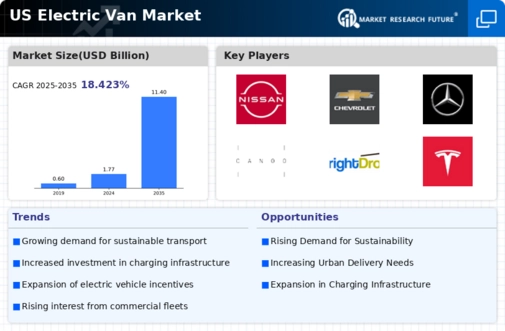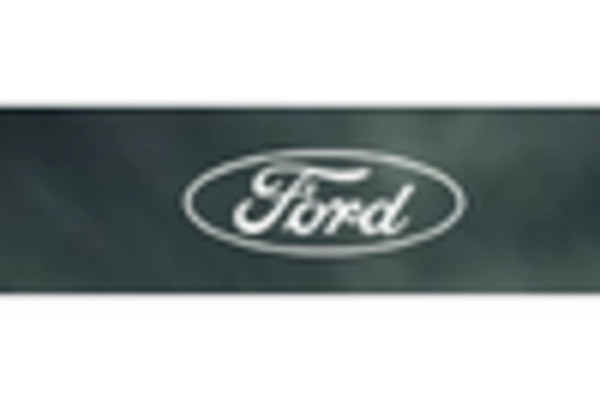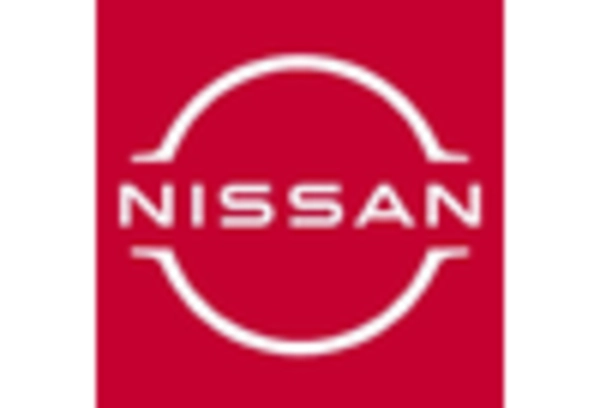Evolving Consumer Preferences
Consumer preferences are shifting towards electric vehicles, including vans, as awareness of their benefits grows. The electric van market is likely to benefit from this trend, as more individuals and businesses prioritize sustainability and cost-effectiveness. Surveys indicate that nearly 60% of consumers are willing to pay a premium for environmentally friendly vehicles. This shift is further supported by the increasing availability of electric vans that cater to various needs, from cargo transport to passenger services. As manufacturers expand their offerings, the electric van market is poised for growth, driven by a diverse range of options that appeal to different segments of the market.
Rising Environmental Concerns
The electric van market is experiencing growth driven by increasing environmental awareness among consumers and businesses. As climate change becomes a pressing issue, many organizations are seeking to reduce their carbon footprints. Electric vans, which produce zero tailpipe emissions, are seen as a viable solution. According to recent data, transportation accounts for approximately 29% of greenhouse gas emissions in the US, prompting a shift towards cleaner alternatives. This trend is likely to continue as more companies commit to sustainability goals, thereby enhancing the demand for electric vans in the electric van market. Furthermore, the growing emphasis on corporate social responsibility is pushing businesses to adopt greener fleets, which could further accelerate the transition to electric vans.
Urbanization and Last-Mile Delivery Needs
The rise of urbanization is creating new demands for efficient transportation solutions, particularly in last-mile delivery. The electric van market is well-positioned to address these needs, as urban areas increasingly seek to reduce congestion and pollution. With e-commerce growth, the demand for electric vans for last-mile delivery is expected to surge. Cities are implementing stricter emissions regulations, which may further incentivize businesses to transition to electric vans. As a result, the electric van market could see a significant uptick in demand from logistics companies looking to comply with these regulations while enhancing their operational efficiency.
Technological Advancements in Battery Technology
Advancements in battery technology are significantly influencing the electric van market. Innovations such as solid-state batteries and improved lithium-ion technologies are enhancing the performance and range of electric vans. For instance, the average range of electric vans has increased to over 200 miles on a single charge, making them more practical for commercial use. Additionally, the cost of battery packs has decreased by nearly 80% since 2010, which is likely to make electric vans more affordable for fleet operators. As battery technology continues to evolve, it is expected that the electric van market will see a surge in adoption, as businesses recognize the long-term cost savings associated with lower maintenance and fuel expenses.
Increased Investment in Electric Vehicle Infrastructure
Investment in electric vehicle infrastructure is a crucial driver for the electric van market. The expansion of charging networks across urban and rural areas is making electric vans more accessible to consumers and businesses alike. Recent government initiatives have allocated billions of dollars to enhance charging infrastructure, which is likely to alleviate range anxiety among potential buyers. As charging stations become more prevalent, the electric van market is expected to experience accelerated growth. This investment not only supports the adoption of electric vans but also fosters a more sustainable transportation ecosystem, encouraging further innovation and development in the sector.

















Leave a Comment